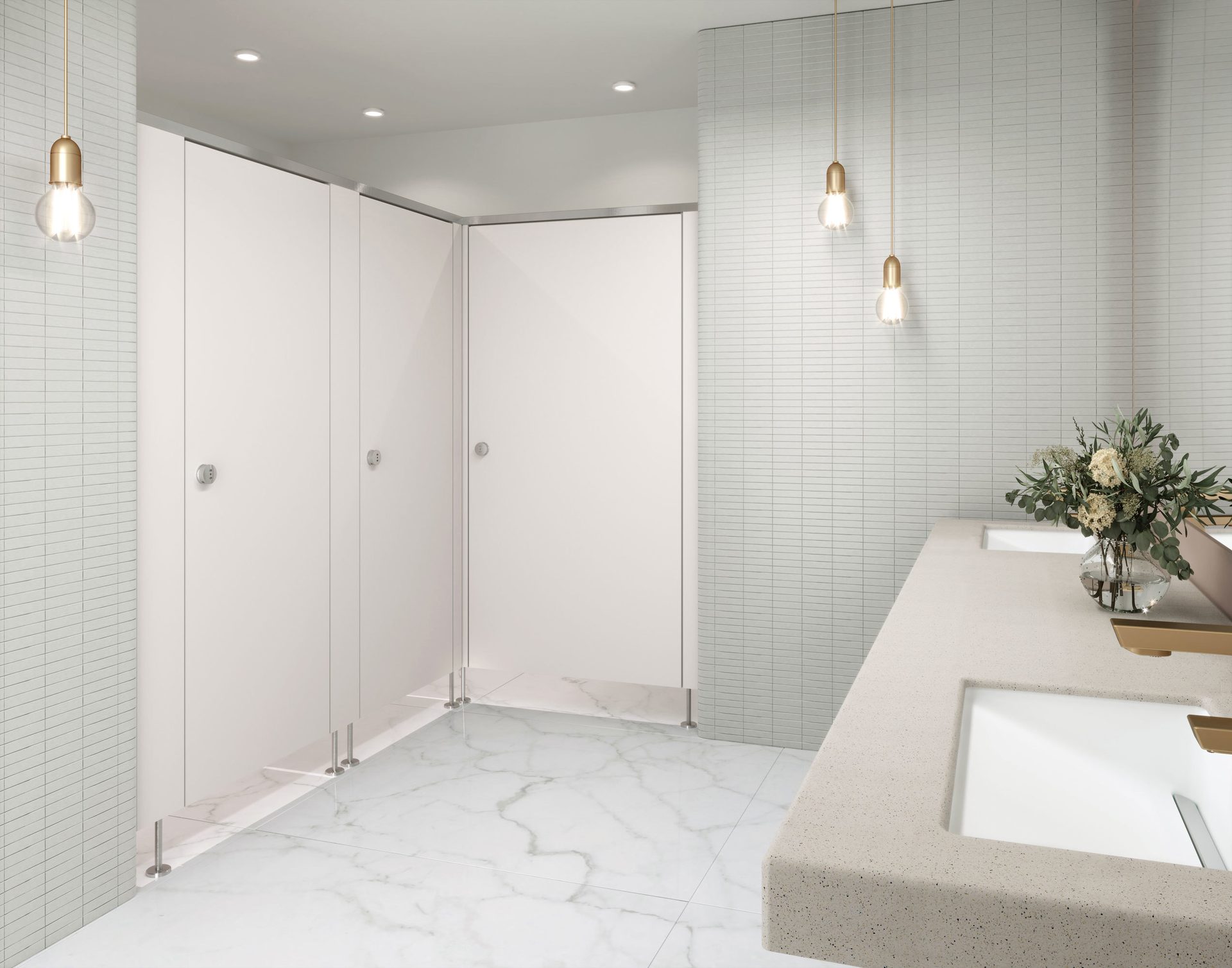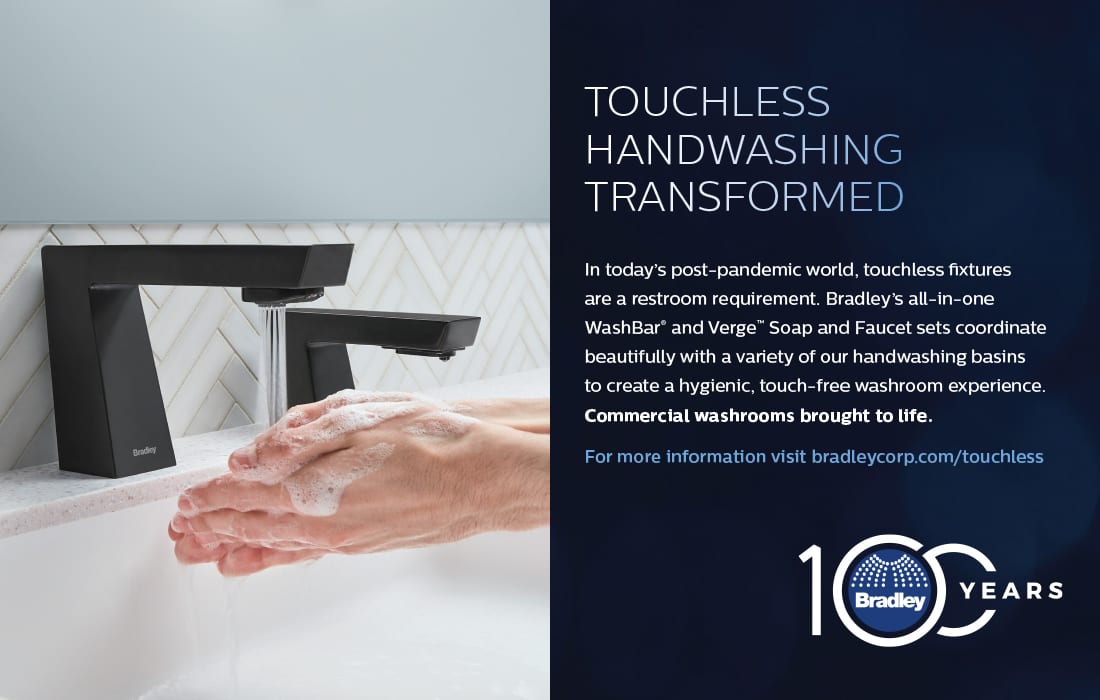commercial
Cleaning up commercial restroom designs
The cleanliness of commercial restrooms starts with designers’ selections of materials, fixtures and layouts
By: Kris Alderson
Xxxxxxxx
If we’ve learned anything about commercial buildings over the past two-plus years, it’s that building owners and occupants want — and even demand — a cleaner experience while using facilities. That proposition gets even trickier for commercial restrooms because a) these spaces are notorious for germs on surfaces and in the air, b) they tend to have multiple touchpoints for activating restroom fixtures and doors, and c) they can’t shake the ick-factor stigma of being “public restrooms.”
Industry research conducted by Bradley Corporation in January 2022 shows that despite ongoing COVID outbreaks, more than 40% of Americans report using public restrooms as often as they did before COVID came on the scene. Interestingly, 27% say they use them even more now than a few years ago.
Clearly, the use of restrooms is not going away – nor is the higher standard for restroom cleanliness. More people are sensitive to the spread of germs and are paying closer attention to details in commercial restrooms, such as how clean they look and smell, how easy they are to navigate without touching surfaces and their overall functionality.
Today, half of the population believes public restrooms are now cleaner and in better condition than before COVID. Prior to the pandemic, 70% of Americans reported having an unpleasant restroom experience. Apparently, stepped-up cleaning and disinfection protocols and stocking of supplies is being noted by restroom users.
As any designer will tell you, the cleanliness of a commercial restroom is a direct extension from the materials, fixtures and layouts specified. The following are the latest trends on designing a clean, no-touch (or low-touch), easy-to-use restroom.
Touchless restroom fixtures
Touchless benefits like minimizing germs, cleanliness, user convenience, and ease of maintenance have made touch-free fixtures the gold standard in germ-laden restrooms.
The top touchless restroom features considered most important are faucets, soap dispensers, flushers and restroom entrance doors.
Bradley’s Healthy Handwashing Survey shows that 84% of Americans believe it’s important for public restrooms to be equipped with touchless fixtures and 63% say they are more likely to return to a business that offers no-touch capabilities in its restrooms.
In fact, Americans view touch-free technology as the number one feature that makes them feel safer from germs in restrooms. Touchless features are also Americans’ most requested improvement in restrooms. More cleaning/restocking takes second place.
The top touchless restroom features considered most important are faucets, soap dispensers, flushers and restroom entrance doors.
Other research by Bradley Corp., conducted in 2020, shows that architects/designers expect to see high increase in specs/demands from clients for touchless fixtures in years to come.
Fortunately, the mechanicals used in sensored technology has been greatly improved. While some older touchless models include sensors that deliver spotty soap and water activations, today’s designs incorporate advanced sensing technology ensuring continuous and reliable washing.
Beyond performance, hygiene and convenience, touchless fixtures are easier to keep clean, maintain and service than manually activated fixtures.
All-in-one hand washing fixtures designed with integrated soap, faucet and hand dryer help keep water inside the handwashing basin. Specifically, the hand dryer works with the basin to keep water from dripping from hands onto the user, walls and floors, causing slips and falls.
Surface materials that deter microbial growth
For sinks, using smooth and nonporous materials with seamless construction like solid surface and natural quartz not only look beautiful, they help prevent bacteria, mold and delamination accumulation and growth. They can be easily cleaned, disinfected, repaired, reused and have a longer lifecycle. These sustainable materials are also cast-formed so they are able to be specified in many attractive shapes and forms. For multi-user restrooms, new washbasin designs made of solid surface material with increased space between the handwashing areas allow for social distancing while washing hands.
For soap and faucet fixtures, PVD coatings are not only a more sustainable way to finish metals than traditional electroplating, they are inherently antimicrobial. These popular and attractive finishes are produced with physical vapor deposition (PVD), an advanced process that creates a molecular bond to the fixture, creating a resilient coating that will not corrode or fade. Some manufacturers offer a variety of PVD finishes to complement any restroom design.
Clean lines convey a cleaner, cohesive aesthetic
Specifying basins, faucets, mirrors and décor with a sleek linear aesthetic naturally supports a cleaner uncluttered restroom space. Integrating clean lines – along with similar finishes, textures and colors – help unify and harmonize restrooms, creating a more refined, sophisticated look. Further, due to their smooth and streamlined appearance, minimalistic designs with clean lines are easier to wipe down and clean, and tend to invite less tampering.
Elevate the feeling of warmth, comfort and privacy
Long gone are days of cold, barren, institutional-looking commercial restrooms. Today’s restrooms convey beauty, architectural style, ease-of-use and privacy. Handwashing stations that are designed with sleek no-touch fixtures; countertop materials that mirror our natural surroundings; warm ambient lighting that emanates from elegant fixtures…. The sky is the limit for accentuating commercial restroom designs with clean, fresh and modern design elements that enhance and beautify these spaces.

Partition styles have also been modernized to feature more privacy, flush finishes, durable construction and advanced features to improve the restroom experience.
New restroom partitions are another way to add beautiful backdrops to restrooms. There are a variety of attractive and durable materials being offered for partitions today such as phenolic, enameled tempered glass, recycled plastic and stainless steel. Partition styles have also been modernized to feature more privacy, flush finishes, durable construction and advanced features to improve the restroom experience.
Moreover, Bradley’s research shows that almost half of Americans are uncomfortable or bothered by the small gap between doors and pilasters in restroom partitions. With privacy being a key user preference in commercial restrooms, new partition models eliminate unpleasant gaps between doors and pilasters, providing a more private retreat.
Facilitating better traffic flow
As for restroom entrances, design elements like eliminating doors, adding S-curved and automated doors and widening doorways have been gaining traction in recent years and may also play a part in addressing Covid-19 concerns. Designs that help facilitate one-way traffic and minimize cross-traffic – like the European model of stalls forming a perimeter around communal washing stations with open circulation – is growing in popularity.
For multi-user restrooms, new washbasin designs with increased space between the handwashing areas allow for social distancing while washing hands.
Water dripping from hands onto floors can cause slips and falls, and breed bacteria. To avoid wet floors, place soap and drying options close to sinks so people needn’t move from the sink with wet hands. As mentioned earlier, all-in-one hand washing fixtures that have the soap, faucet and dryer all in one unit can help to contain water.
Clean restrooms stimulates business and sales
Restroom users are keenly aware of the cleanliness within a restroom – so much so that they’ll willingly spend more money in a clean, well-maintained restroom.

All-in-one hand washing fixtures designed with integrated soap, faucet and hand dryer help keep water inside the handwashing basin.
Almost 60% say they are likely to spend more cash at a business with clean, well-maintained restrooms. Another 58% say when out running errands they’ll take restroom breaks at a business they know has “good” restrooms. Conversely, 51% of Americans say encountering an unpleasant public restroom at a business shows poor management.
The cleanliness of restrooms certainly has a ripple effect on restroom users and business operations. Today, designers have more options than ever to curate beautiful spaces that foster cleanliness, ease of use, comfort and even increased business.
Kris Alderson, MBA, LEED AP, is a senior marketing manager for Bradley Corp., a global manufacturer of commercial restroom equipment. Lead video courtesy of bbbrrn / Creatas Video+ / Getty Images Plus. Photos courtesy of Bradley Corp.





